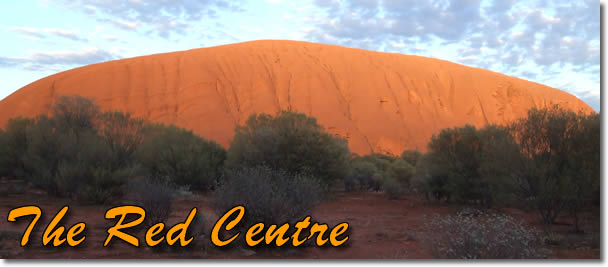 |
Holiday In Australia. |
 |
Kata
Tjuta - the Olgas |
||||
Kata Tjuta (otherwise known as the Olgas) are set within the Uluru-Kata Tjuta National Park, the name has been aptly given to the Olgas as Kata Tjuta actually means 'many heads' in traditional Aboriginal language. The Olgas are about 30km from Uluru and is made up of 36 rounded domes with the tallest (Mt. Olga) being 200m higher than Uluru (that's 546m). There are two walks that you can take around the Olgas. The Valley of the Winds Walk is along a 7km track that circles several of the Olgas.The other walk that is available is the Olga Gorge Walk (Tatintjawiya), which is a 2km walk into the beautiful gorge.
|
||||
|
|
Kings
Canyon
|
|
|||
Kings Canyon is situated within the Watarrka National Park, and is a huge canyon 270m high. The walk around the rim of the canyon is definitely worth it as the views are spectacular, on your way around the rim of the canyon you will pass the tropical pools of the Garden of Eden, and the beehive rock formations called the Lost City. The views from the canyon are also spectacular, overlooking the beautiful landscape. Alternatively you can take the walk through the canyon gorge looking up to the towering canyon above you. This walk is a slightly more reasonable 1 hour walk. Another way to see the canyon is from helicopter. There are numerous flights leaving from both the Kings Canyon Resort and Kings Creek Station. This shouldn't be missed, as you get to fully appreciate the scale of the canyon.
|
|||||
|
|
|
||||
| |
Uluru - Ayers Rock |
|
|||
The only way to truly experience Uluru (Ayers Rock) is to visit it. No picture can show the magnificence of the size and colours of the rock (348 metres high). Like the Olgas, Uluru is set within the Uluru-Kata Tjuta National Park Uluru holds deep Aboriginal significance to the Anangu people, and many stories are told as you wander around the base. You can also learn about Ayers Rock at the Uluru-Kata Tjuta National Park Cultural Centre. Anangu Tours is also based here, and can take you on numerous tours around the base, although they do request that you respect their culture and do not climb the rock. There are different walks that you can take around the base of Uluru. The first would be the long 9.4km walk around the whole of the base. Around the base you will see numerous Aboriginal paintings, along with descriptive boards explaining about the paintings. Some areas of the rock are sacred and are clearly marked, so the Anangu people request that you do not take pictures or enter these areas. Two
shorter walks that you can do are the Mala Walk, which is 2km, and
the Mutitjulu Walk, which is 1km. The Mala Walk tells the story
of the Tjukurpa (traditional law) of the Mala (hare-wallaby people). If you don't fancy walking around Ayers Rock, you should definitely go to watch it during sunrise or sunset, when the rock changes colours, from greys, to browns, to reds, to oranges, to yellows. It really is an amazing experience to watch this happening. |
|||||
| |
|
||||
More Australia holiday pictures:-
|
|
|
|
| © David Avery 2004-07 |





































































